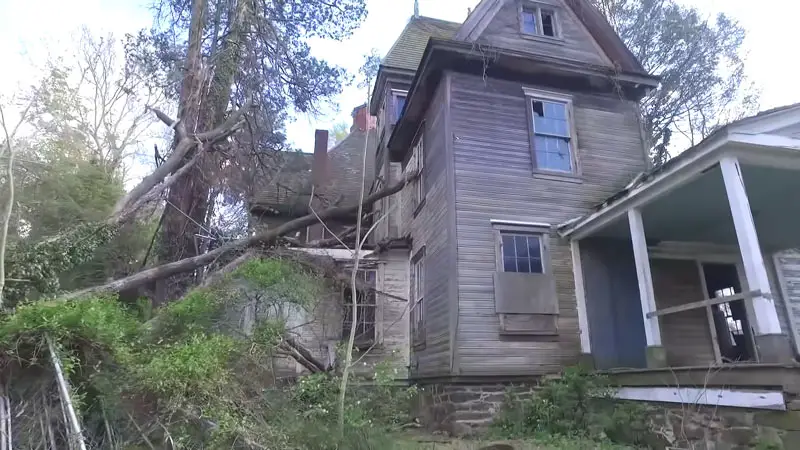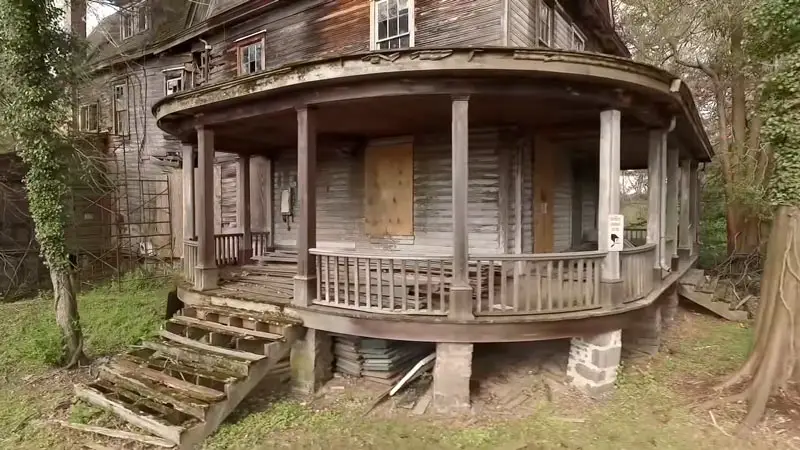Why Old Houses Are Stronger

Older homes are more soundproof because they have better sound barriers and insulation. Structurally, older homes are more stable because of their thicker walls and roofing materials.
Better sound barriers and insulation make older homes stronger in the noise-dampening department. Additionally, these structures typically use higher quality doors and windows that work as great insulators too.
You'll Learn About
Why Old Houses Are Stronger?
Old homes are often more soundproof than new ones because they use older materials and have better structural stability. Sound barriers & insulation inside old homes are usually much better than in newer construction, which means you’ll hear less noise outside your home.
Older homes also tend to be stronger, meaning that they can handle heavier sounds without breaking down or sustaining damage.
Older Homes Are More soundproof
Old houses are typically built with thicker walls and more soundproofing than newer homes. The older the house, the more likely it is to have been properly insulated and sealed from the exterior environment.
Older roofs may also be better suited for weather protection, which can reduce noise levels inside a home. Older windows may also be less permeable to sound, making them a more effective barrier against outside noise pollution.
Finally, older construction techniques often use heavier materials that result in a stronger structure overall
Older Materials Are Stronger
By using old materials, homes become stronger and last longer due to their design features. Older construction methods use different types of materials that make a home more durable.
Old houses have been around for centuries, so they’ve had time to develop unique features that make them strong. There are certain components in older buildings that are made from heavier or sturdier materials than their modern counterparts.
Even though old buildings may be less energy efficient, the strength of their construction makes them better overall candidates for repairs or updates
Better Sound Barrier & Insulation
Old houses are typically built with thicker walls and more sound insulation, which makes them stronger in the long run. Properly maintaining your old house can also help improve its overall strength against weathering and noise transmission.
By upgrading or replacing specific components of an older home, you may be able to achieve a better sound barrier and increase insulation levels for optimum performance. A properly installed acoustic wall system may even restore hearing damage caused by noise pollution from outside sources such as traffic or machinery.
It’s important to consult with a professional if you’re considering improving the sound-blocking capabilities of your older home.
Structurally, Older Homes are More Stable
Older homes are typically built with more stability in mind, which can make them stronger when it comes to weathering the elements. Typically, older homes have thicker walls and a higher level of insulation that helps keep them warm in winter and cool in summer.
Older roofs are also often designed differently than newer ones, which means that they resist water infiltration better. Old windows were likely made with heavier glass that doesn’t easily break or shatter during storms or natural disasters like earthquakes/tsunamis/firefights.
All of these factors together mean that an old home is much less likely to suffer significant damage from any one event – whether it’s a severe storm, natural disaster, or even something as simple as vandalism.
What keeps a house strong?
A strong foundation is essential to keep a house standing. Wall and roofing materials play an important role in determining the strength of a home. Proper maintenance can help your home stay strong for years to come.

What makes a building stronger?
There are many things that make a building stronger, including its foundation, the materials used in its construction, and the way it is designed.
Reinforced Concrete
Reinforced concrete is a type of building that uses steel bars to reinforce the concrete and make it stronger. The reinforced concrete is then usually heavier than regular concrete, meaning that it can support more weight without collapsing.
Steel Bars in the Molds
The reinforcement mesh is made from steel bars which are inserted into the molds during the manufacturing process. The strength of these bars depends on how tightly they are inserted into the mold and how well they were welded together.
Strengthening Effects of the Steel Bars
The strengthening effects of the steel bars depend on their size, shape, and composition (i.e., whether they are solid or hollow). Solid reinforcement has a greater effect than hollow reinforcement on structural integrity because it resists shear forces better.
In addition, large-diameter cross-sectional areas result in more effective stress concentrations at critical points within a structure’s frame members.
Types of reinforcing mesh used in reinforced concrete
There are two main types of reinforcing mesh: open-web type and closed-web type. Open-web types have a lot of holes in them while closed-web types have smaller openings that do not allow water or other liquids to seep through them easily.
How many years do bricks last?
Regular maintenance keeps brick structures healthy, including mortar repointing. Proper placement and bonding can increase the lifespan of your brick structure.
Brick colors are vibrant and last longer when maintained properly. Vibrant colors mean more life to your brick. Keep up with regular maintenance to keep your bricks in great condition.
Are old houses better than new ones?
There are many people who believe that old houses are better than new ones. They say that old homes have character, and they often take longer to build which means that the materials used in them will last for a longer time.
New homes, on the other hand, can be built quickly and with less care taken to ensure durability. Some people also argue that older homes are cheaper to maintain because there is usually more history attached to them. Finally, some people feel like newer homes don’t offer as much privacy or atmosphere as older ones do.
Better Quality Construction
Old houses typically have better quality construction than new ones. Older homes are built with stronger walls and more soundproofing and insulation than newer buildings. This means that old houses tend to be quieter, warmer, and cooler than newer homes.
Stronger Walls
Newer homes often use thinner walls which can easily break in an event of a storm or natural disaster.
Old houses, on the other hand, are typically made from thicker materials that will stand up to greater forces without breaking down.
Sound Barrier & Insulation
Sound barriers and insulation help to make older homes much quieter than new ones because they reduce noise from outside sources such as traffic or windblown debris penetrating into the home through cracks in the walls or windows.
Older Materials
Older materials also tend to last longer than newer materials do- sometimes for decades instead of just a few years like with modern building products.
Why do old houses last longer?
Old houses typically have a higher moisture content and are resistant to natural rot. The use of chemical agents is reduced in older buildings, which allows for a longer lifespan.
Older trees provide increased moisture content and greater Rot Resistance in old houses than young trees do. Old-growth pine lumber is less likely to yellow or decay over time, providing an element of timelessness to an old house.
Can a house last 300 years?
A properly maintained and well-built home can last 300 years or more. Quality materials, good workmanship, and regular maintenance are essential for the long life of your house.
Properly choosing the right type of construction will ensure that your home lasts a long time. By following some simple tips, you can help prolong the life of your house.
Are older buildings stronger?
Older buildings tend to be more robust than newer ones, due to the fact that they are typically built with reinforced floor joists and roof trusses, as well as properly installed windows and doors.
Proper maintenance can help older buildings remain strong over time- by ensuring that windows & doors are sealed properly, for instance. By considering an older building when shopping for a home, you could end up getting one that is much sturdier than if you bought a new one.
How do houses not collapse?
A house does not collapse simply because it is built on solid ground. The foundation of a house is made up of many layers, and each layer relies on the one below it to keep everything stable.
If any part of the foundation fails, the whole structure can come tumbling down. Houses are built with strong load-bearing walls to prevent them from collapsing under the weight of people, furniture, and other objects inside.
These walls are also designed to withstand a certain amount of pressure, which is why they don’t usually collapse even when subjected to heavy winds or earthquakes. The walls of a house are made out of solid materials such as concrete or steel.
This makes it much harder for the wall to break down due to external forces like wind or earthquake shaking. Load-bearing walls play an important role in allowing houses to stand up against harsh weather conditions and structural stresses caused by earthquakes and storms.
They provide support for the roof line and internal components, keeping everything stable during extreme events. Walls must be properly designed in order for them to function correctly.
Otherwise, your house may suffer damage that could lead to its collapse. Walls should always be part of the overall structure when building a home – not just an added feature you can forget about. Modern construction methods, while efficient, sometimes prioritize speed over longevity.
If you’re renovating an older home, consider constructing a driveway over a gas line to enhance functionality. Additionally, understanding whether wrought iron porch columns are load-bearing can help you preserve the home’s structural integrity. For more tips, check out how to install J-channel along a roof line.
To Recap
Old houses are often made of thicker, more durable materials than new construction. This allows old houses to withstand more damage during earthquakes and weather conditions, which makes them stronger overall. But old homes also have some hidden problems.
